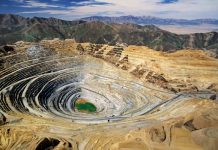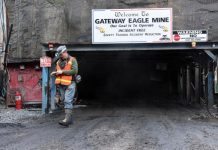
RALEIGH, N.C., Feb. 6 (UPI) — The region of Appalachia is defined by the Appalachian Mountains, but new research suggests Central Appalachia is a bit flatter than it once was thanks to mountaintop mining.
After analyzing pre- and post-mining topographic data in southern West Virginia, researchers at Duke University determined that some parts of Central Appalachia are 60 percent flatter than they were prior to excavation.
Researchers shared their analysis in a new paper, published this week in the journal Environmental Science and Technology.
“There hasn’t been a large-scale assessment of just the simple full topographic impact of mountaintop mining, which occupies more than 10 percent of the land in the region we studied,” lead study author Matthew Ross, a PhD student in ecology, said in a news release. “[We found] the impact is deep and extensive. It is locally large and more wide-ranging than other forms of mining.”
Across the entire region, average slope of the land declined 10 degrees in the wake of mountaintop coal removal.
Ross and his colleagues say both scientists and policy makers fail to appreciate the impact of mountaintop removal mining as compared to other types of industrial land use.
“Mountaintop mining is penetrating much more deeply into the earth than other land use in the region like forestry, agriculture or urbanization,” Ross explained.
The removal of large portions of the Appalachians’ ridges has left deep rifts — referred to as “valley fills” — affecting water runoff and other geological cycles in ways scientists don’t yet fully understand. Where soil was once a few feet deep, it is now sometimes several hundred feet deep.
Scientists say water running through these deep fills more easily picks up heavy metals and toxins leftover from the mining process. Previous research has shown rivers and streams in closer vicinity to mountaintop mines host higher concentrations of minerals.
“We have data that the water quality impacts can last at least 30 years, but the geomorphology impacts might last thousands of years,” said Ross. “Once you have these flat plateaus, it sets up a whole new erosion machine and a whole new way that the landscape will be shaped into the future.”





